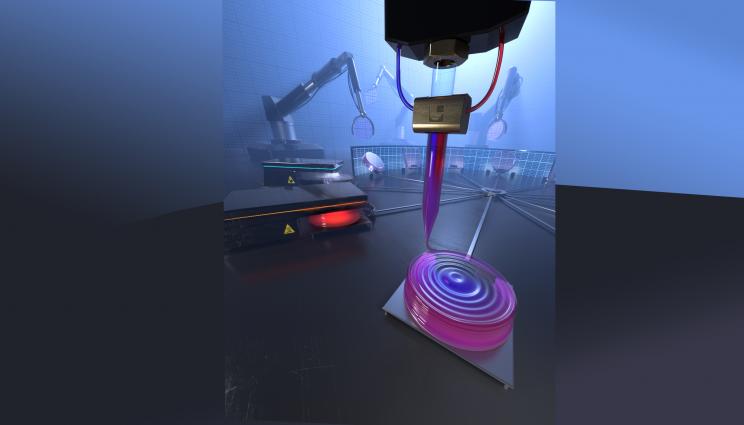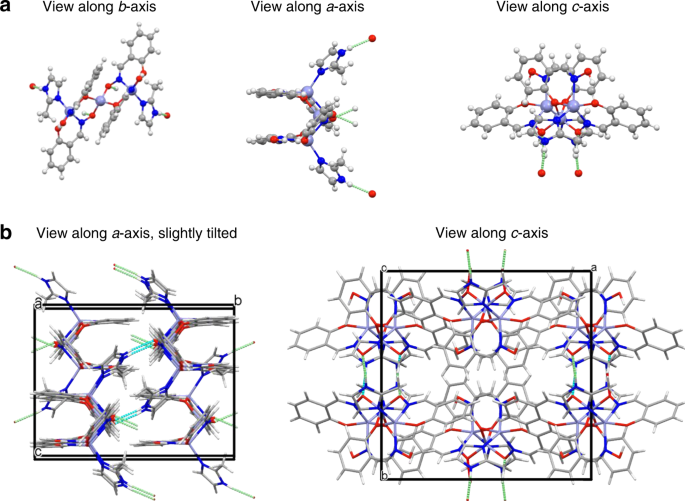(New process narrows the gap between natural and synthetic materials)
2020/11/19 スイス連邦工科大学ローザンヌ校(EPFL)(ローザンヌ工科大学)

・ EPFL が、強力でありながら柔軟な天然の材料特性により近づく、合成ハイドロゲルの 3D プリンティングによる製造技術を開発。
・ 合成ハイドロゲルは、窓ガラスのように硬く耐荷重性があるがエネルギー吸収能力に劣るため微小なヒビでも構造中に広がってしまうものと、ヒビには強いが極めて柔軟なため耐荷重性に欠けるものの 2 種類に分類される。
・ 人間の皮膚や軟骨は、体重や挙動を支えられるほど頑強でありながら容易に壊れない柔軟性を有するが、これは、ナノ~ミリメートル規模での高精密な構造によるもの。これらの両特性を同時に合成材料で実現することは難しい。
・ 新製造技術は、個別に配置した基本構成要素を上部の構造へと構築する、自然の材料合成プロセスに着想を得たもの。合成材料の最終構造と部分的組成のより優れた制御が可能となる。
・ モノマーを閉じ込めた水と油の乳濁液の液滴(コンパートメントとして機能)内で、モノマーの結合によりポリマーネットワークを形成。これらのマイクロ粒子は安定しているが、この時点では相互作用が弱くまとまりに欠ける。
・ その後、これらのマイクロ粒子(スポンジのような多孔質)を別のモノマーに浸すとペースト状になる。このペーストを 3D プリントして紫外線を照射すると、二回目に加えたモノマーが重合し、ポリマーを形成する。
・ このポリマーは、プロセス初期に形成されたポリマーと絡み合うことでペーストを硬化させ、極めて頑強な高耐久性の材料を作る。同材料による僅か 3mm の長さのチューブでは、最大 10kg の引張荷重と、80kg もの圧縮荷重を構造の完全性を保持したまま耐久できた。
・ 新製造技術による同材料は、ソフトロボティクスでのアプリケーションをはじめ、人工インプラント用の生体適合性材料として期待できる。
URL: https://actu.epfl.ch/news/new-process-narrows-the-gap-between-natural-and-sy/
<NEDO海外技術情報より>
(関連情報)
Advanced Functional Materials 掲載論文(フルテキスト)
3D Printing of Strong and Tough Double Network Granular Hydrogels
URL: https://onlinelibrary.wiley.com/doi/10.1002/adfm.202005929
Abstract
Many soft natural tissues display a fascinating set of mechanical properties that remains unmatched by manmade counterparts. These unprecedented mechanical properties are achieved through an intricate interplay between the structure and locally varying the composition of these natural tissues. This level of control cannot be achieved in soft synthetic materials. To address this shortcoming, a novel 3D printing approach to fabricate strong and tough soft materials is introduced, namely double network granular hydrogels (DNGHs) made from compartmentalized reagents. This is achieved with an ink composed of microgels that are swollen in a monomer‐containing solution; after the ink is additive manufactured, these monomers are converted into a percolating network, resulting in a DNGH. These DNGHs are sufficiently stiff to repetitively support tensile loads up to 1.3 MPa. Moreover, they are more than an order of magnitude tougher than each of the pure polymeric networks they are made from. It is demonstrated that this ink enables printing macroscopic, strong, and tough objects, which can optionally be rendered responsive, with high shape fidelity. The modular and robust fabrication of DNGHs opens up new possibilities to design adaptive, strong, and tough hydrogels that have the potential to advance, for example, soft robotic applications.



